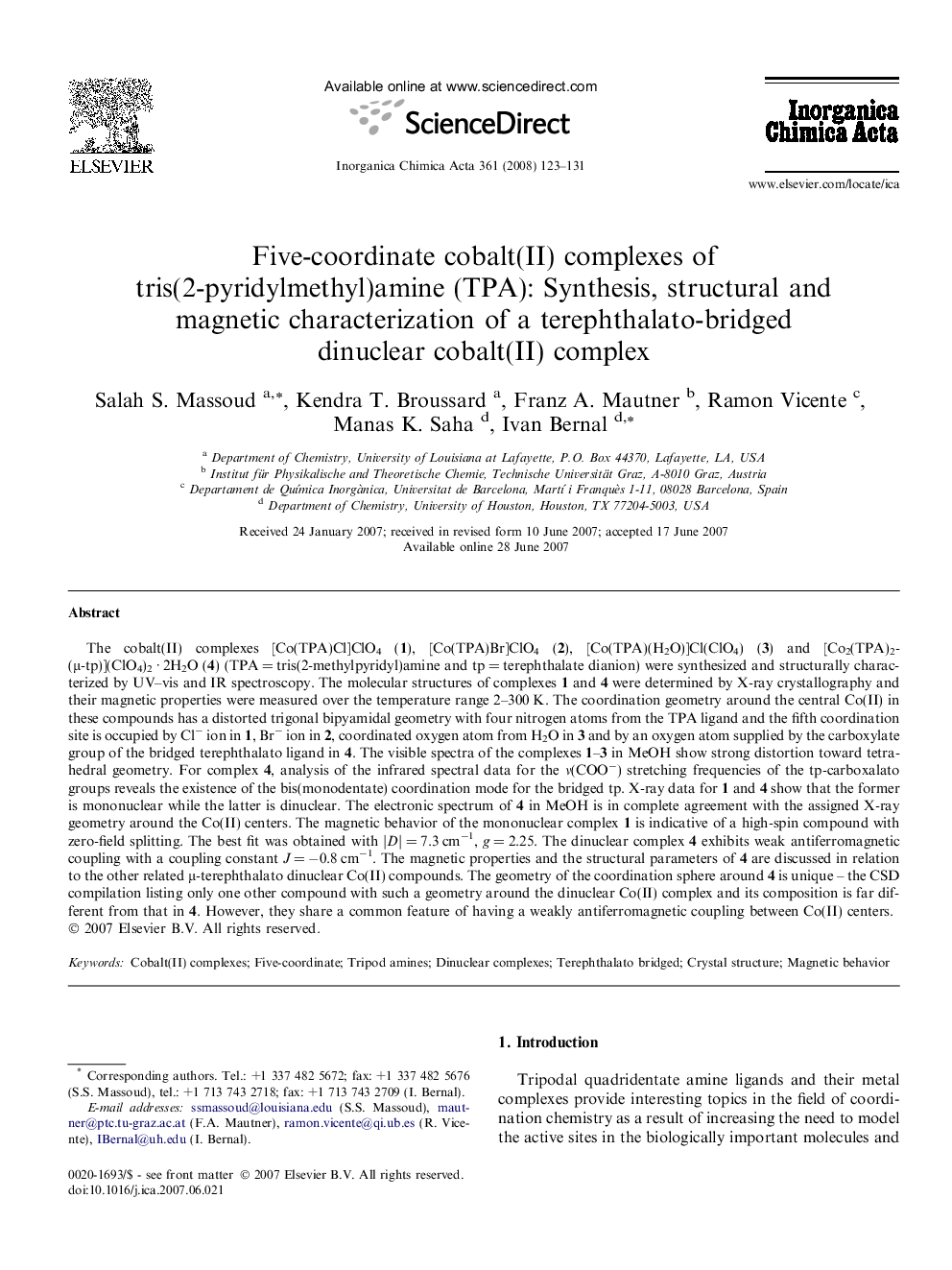| Article ID | Journal | Published Year | Pages | File Type |
|---|---|---|---|---|
| 1307573 | Inorganica Chimica Acta | 2008 | 9 Pages |
The cobalt(II) complexes [Co(TPA)Cl]ClO4 (1), [Co(TPA)Br]ClO4 (2), [Co(TPA)(H2O)]Cl(ClO4) (3) and [Co2(TPA)2(μ-tp)](ClO4)2 · 2H2O (4) (TPA = tris(2-methylpyridyl)amine and tp = terephthalate dianion) were synthesized and structurally characterized by UV–vis and IR spectroscopy. The molecular structures of complexes 1 and 4 were determined by X-ray crystallography and their magnetic properties were measured over the temperature range 2–300 K. The coordination geometry around the central Co(II) in these compounds has a distorted trigonal bipyamidal geometry with four nitrogen atoms from the TPA ligand and the fifth coordination site is occupied by Cl− ion in 1, Br− ion in 2, coordinated oxygen atom from H2O in 3 and by an oxygen atom supplied by the carboxylate group of the bridged terephthalato ligand in 4. The visible spectra of the complexes 1–3 in MeOH show strong distortion toward tetrahedral geometry. For complex 4, analysis of the infrared spectral data for the ν(COO−) stretching frequencies of the tp-carboxalato groups reveals the existence of the bis(monodentate) coordination mode for the bridged tp. X-ray data for 1 and 4 show that the former is mononuclear while the latter is dinuclear. The electronic spectrum of 4 in MeOH is in complete agreement with the assigned X-ray geometry around the Co(II) centers. The magnetic behavior of the mononuclear complex 1 is indicative of a high-spin compound with zero-field splitting. The best fit was obtained with ∣D∣ = 7.3 cm−1, g = 2.25. The dinuclear complex 4 exhibits weak antiferromagnetic coupling with a coupling constant J = −0.8 cm−1. The magnetic properties and the structural parameters of 4 are discussed in relation to the other related μ-terephthalato dinuclear Co(II) compounds. The geometry of the coordination sphere around 4 is unique – the CSD compilation listing only one other compound with such a geometry around the dinuclear Co(II) complex and its composition is far different from that in 4. However, they share a common feature of having a weakly antiferromagnetic coupling between Co(II) centers.
Graphical abstractThe cobalt(II) complexes [Co(TPA)Cl]ClO4 (1), [Co(TPA)Br]ClO4 (2), [Co(TPA)(H2O)]Cl(ClO4) (3) and [Co2(TPA)2(μ-tp)](ClO4)2 · 2H2O (4) were synthesized and structurally characterized. The magnetic properties of 1 and the dinuclear bridged terephthalato complex 4 were determined and discussed in relation to other related species.Figure optionsDownload full-size imageDownload as PowerPoint slide
